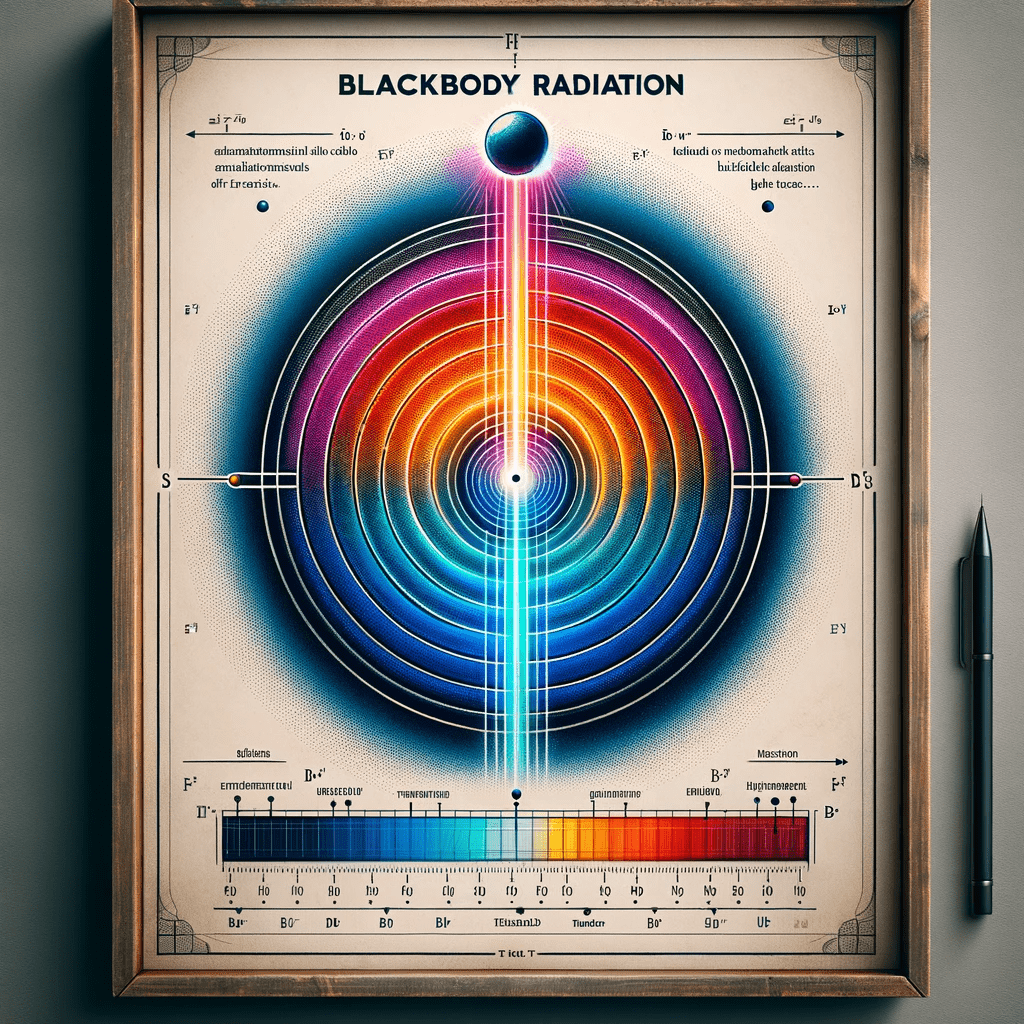Blackbody Radiation

In the vast expanse of the universe, everything from a heated metal’s glow to the mysteries of UFOs can be understood through radiation. At the heart of this understanding is blackbody radiation, an inherent emission of objects based on their temperature. This article looks deep into this topic, from its foundational principles to its significance in quantum mechanics, while also shedding light on its potential implications for the study of unidentified flying objects.
A blackbody is an idealized object that absorbs all electromagnetic radiation that falls onto it. No radiation passes through it, and none is reflected. Because real objects are never perfect blackbodies, they can only approximate this behavior.
When a blackbody is at a temperature above absolute zero, it emits electromagnetic radiation. The nature of this radiation (its spectrum) depends only on the temperature of the blackbody. As the temperature of the blackbody increases, the peak of the emitted radiation spectrum shifts to higher frequencies (or shorter wavelengths).
Some key points about blackbody radiation:
- Wien’s Law: This law relates the temperature of a blackbody to the peak frequency (or wavelength) of its emitted radiation.
- Planck’s Law: This gives the spectral radiance of electromagnetic radiation emitted by a blackbody in terms of frequency at a definite temperature.
- Stefan–Boltzmann Law: This states that the total energy radiated per unit surface area of a blackbody is directly proportional to the fourth power of the blackbody’s absolute temperature.
A familiar example of blackbody radiation in everyday life is the heating of metal. As metal is heated, it first glows red, and as it gets hotter, it becomes orange, then yellow, and finally white, indicating that the peak frequency of its emitted radiation is increasing.
Another example is the cosmic microwave background radiation, which is the remnant heat from the Big Bang. It’s observed as blackbody radiation with a temperature of about 2.7 Kelvin.
Blackbody radiation played a crucial role in the development of quantum mechanics. Classical physics failed to predict the spectrum of blackbody radiation accurately. It was Max Planck’s formulation in 1900, where he introduced the idea of quantization of energy, that successfully described it, paving the way for quantum theory.
Objects, whether identified or unidentified, emit radiation based on their temperature. This inherent emission, known as blackbody radiation, offers a tool to detect, identify, and possibly understand the nature and technology of Unidentified Flying Objects (UFOs). From infrared sensors capturing unseen emissions to the analysis determining an object’s origins, blackbody radiation provides a scientific lens through which we can scrutinize and interpret UFO encounters.
- Detection: If a UFO (or any object) is at a temperature different from its surroundings, it will emit blackbody radiation characteristic of its temperature. This radiation, if in the infrared spectrum, can be detected using infrared sensors or cameras. Many modern military and civilian sensors can detect infrared emissions, so if a UFO is emitting such radiation, it could potentially be detected and tracked even if it’s not visible to the naked eye.
- Identification: By analyzing the spectrum of radiation emitted by an unidentified object, one can potentially determine its temperature and some material properties. If the spectrum matches that of a blackbody, it might indicate the object is an artificial craft or device rather than a natural phenomenon.
- Advanced Propulsion Systems: Speculatively, if UFOs are some form of advanced craft, their propulsion systems might emit specific radiation signatures. If these signatures include a component of blackbody radiation, it might provide clues to the operation or energy sources of these hypothetical systems.
- Evidence of Technology: If a UFO were found to emit a very specific and controlled spectrum of blackbody radiation, it might suggest the presence of technology. For instance, if a craft could alter its emissions to avoid detection or communicate, it might represent a technology beyond current human capabilities.
Blackbody radiation, pivotal in quantum mechanics, acts as a deciphering tool, helping us bridge our understanding between what we know and what remains unexplained. Moving from the foundational knowledge of blackbodies to the enigmatic realm of UFOs, it’s clear that this type of radiation can be instrumental in comprehending the broader cosmos and might even hold keys to interpreting signs of advanced, possibly extraterrestrial, technology.


